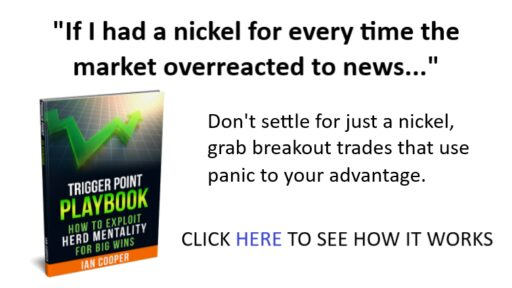by Dave Caplan
As the market begins to heat up, opportunities to use the “ratio spread” are presented to us. This option strategy has numerous benefits over just a net long or short position.
We all know the benefits of buying an option or futures contract that moves in our favor. Not only is it exciting to “beat the market”, but you are also making profits in your account which, bottom line, should be the most important factor to traders. In fact, the only negative factor to trading, of course, is that if the market goes against you, and normally you lose money.
What if we could design a position that would not only make money if the market moved as we expected, but would not lose (and sometimes make a small profit), even if the market moved drastically against us?
Fortunately, it is not a position that we have to make up or design. It is already well known to the professional traders and is called the “ratio spread”.

A “ratio spread” is initiated by purchasing a close-to-the-money option and selling two or more further out-of-the-money options. For example, with November soybeans trading at $6 we may decide to purchase a November soybean at a $7 call and sell two $10 calls. Let’s assume that the $7 call is trading at a premium of 20 cents and the $10 call at a premium of 12 cents. We would then pay 20 cents for the $7 call ($.20 X $50 per penny = $1,000); and receive two times 12 cents or 24 cents for the $10 calls we sell ($.24 X $50 = $1,200). In this case, since we would receive $200 more than we paid out, we would be doing the spread at a credit of 4 cents or $200. Receiving this credit is very important when doing the “ratio spread”, and beneficial for the following reasons:
First of all, if the market goes up as we expect in this example, we will receive a profit of $50 for every penny soybeans moves over $7 at expiration (up to $10) for a maximum profit potential of $15,000.
Unlike a normal option purchase, you have no cost for your initial option purchase, since it was paid for by the sale of the two $10 calls.
In doing this position we are also taking advantage of the disparity in option premium between strike prices. We find in most markets, particularly in the grains and metals, that options that are closer to the money have lower volatility (premium costs) than further out-of-the-money options.
These out-of-the-money options have no actual value, since they have only what is known as “time value premium”. This is a certain amount that people will pay for an option because it has a “chance” of becoming valuable some time in the near future.
We find that this “time valued premium” increases the further out-of-the-money an option is. This is because there seems to be more demand by smaller traders to purchase “cheap” options. This can greatly increase the time value of the out-of-the-money options to a point where they, at times, are twice as expensive as the close-to-the-money options. By using the “ratio spread” we can take advantage of this disparity in premium since it allows us to purchase the more reasonably priced close-to-the-money option and sell the more expensive options that are further out-of-the-money.
The further out-of-the-money options that we sell also will lose their time value quicker as they approach expiration. Time value decreases for both an option at-the-money and out-of-the-money option as it approaches expiration. This decline in time value is much more dramatic for the out-of-the-money option.
Finally, one of the biggest benefits of the “ratio spread”, as we mentioned earlier, is the fact that if the market does not move as we expected, as long as we obtain a credit when the spread is initiated, we will not have a loss. In our soybean example above, let’s assume that soybeans are plentiful and the price of soybeans drops to $4. In that case, the options we purchased and sold will all be worthless at expiration and at that time the only difference in our account from this position will be the 4 cent premium that we took in when we initiated this position. Therefore, our account will increase by $200 even though the market moved against us less commissions and exchange fees!
In fact, there is only one case where the “ratio spread” can run into trouble, when the price of the futures market exceeds the price of the options sold. For example, in our previous discussion of the soybean “ratio spread”, if November soybeans expire at $10 we make 300 points X $50 a point or $15,000. However, if the price of soybeans exceeds $10 we begin to lose $50 of our profit for each penny that soybeans exceed $10. Therefore, at a price of $13 we would break even on this position, and over $13 we would begin to have a net loss of $50 for each penny soybeans exceeded the price of $13.
To help control the potential for large losses in these kinds of conditions, we have a rule that we follow that requires us to close out our “ratio spread” if the futures price exceeds the strike price of our short option. Therefore, if November soybeans were to rise to above $10, we would recommend closing out the position at that point.
We normally find that if the market rises slowly towards the strike price of the options we sold that we still have a profit on the position when we close it out. Usually, only in the case of a quick rise is it necessary to close the position out at a loss.
The best time to initiate a “ratio spread” is when the market has made a quick straight up move. This is because this type of action normally will increase the demand for out-of-the-money “cheap” options for the reasons we described above. This also seems to be the time when there is the greatest disparity in premiums between the close-to-the-money and the out-of-the-money options, providing the best opportunity for “ratio spreads”.
We feel that the many benefits of the “ratio spread” far out-weigh the single problem area, that of the market rising too quickly, too soon. Also, these problems are easily handled by our contingency plan and rules that we described above. The ability to initiate a spread that can be profitable over a wide range of prices and market conditions, (in the case of the soybean example this position is profitable from $0-$13), provides us with a position that allows us to have both financial and emotional security in the markets.











Recent Comments